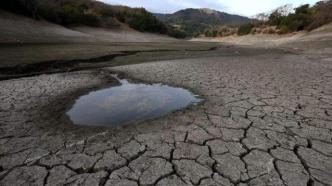
Recently, American scientists released a report in "Science" that the El Niño phenomenon is expected to reappear this year and will cause trillions of dollars in economic losses worldwide. The study is one of the first to assess the long-term toll of El Niño, predicting far greater losses than previous studies.
El Niño has far-reaching effects on climate change, causing devastating floods, droughts, killing crops, declining fish populations and increasing tropical diseases.
The researchers spent two years analyzing the global economy in the decades following the El Niño events of 1982-1983 and 1997-1998, and found a "persistent signature" of slowing economic growth, defined as 5 years after each event. The global economy lost $4.1 trillion and $5.7 trillion, respectively, in 2009, much of which was borne by poor tropical countries.
The researchers predict that, given that climate change is likely to exacerbate the frequency and intensity of the El Niño phenomenon, global economic losses in the 21st century will reach $84 trillion even if pledges by countries around the world to reduce carbon emissions are realized. They estimate that the 2023 El Niño alone could cost the global economy $3 trillion by 2029.
Lead author Christopher Callahan, a doctoral student in geography at Dartmouth College in the US, said the research resolves a controversy about how quickly societies recover from major climate events such as El Niño. Research data show that the economic recession after the El Niño event may last for 14 years, or even longer.
The findings highlight a key but understudied factor affecting the economy, year-to-year changes in climate conditions, said lead author Justin Mankin, an assistant professor at Dartmouth College. El Niño, once described as the "climate-changing trunk," alters weather around the world and affects national economies.
When it comes to climate change, world leaders and the public are rightfully concerned about the continued rise in average global temperatures. "But if you don't take El Niño into account when estimating the cost of global warming, then you greatly underestimate the cost of global warming," Mankin emphasized. orders of magnitude larger."
The researchers found that the El Niño events of 1982-1983 and 1997-1998 resulted in roughly 3 percent declines in U.S. gross domestic product (GDP) in 1988 and 2003. In 2003, the GDP of tropical coastal countries such as Peru and Indonesia fell by more than 10%.
"We need both climate change mitigation and more investment in El Niño prediction and adaptation, because these events only increase the cost of global warming," Mankin said.
In 2023, an El Niño is expected to occur when sea surface temperatures are at record highs, Callahan said. The last major El Niño occurred in 2016, making that year the hottest on record. Over the next seven years, global warming intensified. In addition, a persistent El Niño phenomenon is occurring around the world. The National Oceanic and Atmospheric Administration predicts that there is an 80 percent chance of an El Niño event by the end of summer.
"Our findings suggest that economic growth in tropical countries could be severely affected over the next 10 years. Their global productivity will be lost in the trillions of dollars compared to countries without El Niño," Callahan said.
Related paper information: https://doi.org/10.1126/science.adf2983
(Originally titled "El Niño Costs the Global Economy Trillions of Dollars")

